Released nearly a year apart, the Sony Xperia S and the Samsung Galaxy S II are not that different - both are flagship droids with dual-core CPUs and 4.3" screens. But the newer Xperia S brings some fine upgrades, like the 12MP camera and the 720p screen.
Still, the Galaxy S II is the outgoing Samsung flagship while the Xperia S is the best and the brightest of Sony's new NXT series and will be for a while longer, so it will have to fight off the onslaught of quad-core droids headed to market.
Processor aside, the Sony Xperia S brings a high-pixel-density 4.3" screen with 720p resolution and Mobile BRAVIA engine. Then there's the 12MP camera with 1080p video recording, a notable advantage as most new recently announced phones use 8MP shooters. There's also excellent connectivity and so on.
The 1.5GHz dual-core CPU and Adreno 220 GPU showed promising performance, beating most dual-cores too. Here's the summary of the pros and cons of going for the Sony Xperia S.
Sony Xperia S over Samsung Galaxy S II:
- 4.3" 720p screen (342ppi) over 4.3" WVGA screen (217ppi)
- 12MP still camera over 8MP
- 1.5GHz Scorpion CPU over 1.2GHz Cortex-A9 CPU
- Standard microHDMI port over MHL port (requires adapter for HDMI out)
- GLONASS support in addition to A-GPS
- All units have NFC over optional support in the S II
- 1750mAh battery over 1650mAh
- 3D sweep panorama and Multi Angle modes
Samsung Galaxy S II over Sony Xperia S:
- SuperAMOLED Plus screen has excellent black levels and better viewing angles
- Expandable storage, 16GB/32GB built-in over 32GB fixed storage
- 8.5mm thick (with some thicker areas) over 10.6mm (with thinner areas)
- Weighs 116g over 144g
- Bluetooth 3.0+HS over Bluetooth 2.1
- 2MP front-facing camera over 1.3MP front-facing camera
Both phones have features that we wish the other had, so there's no clear winner. Also, we'll be doing thorough testing too match the performance in seemingly equal areas (e.g. 1080p video capture) and also if the differences change the end user-experience (1.5GHz CPU vs. 1.2GHz, 1750mAh battery over 1650mAh and so on).
You should already be familiar with the structure of these head to head articles - we'll start off with a general comparison and then dig into the specifics, like screens, cameras, battery life and so on.
Software and hardware overview
The Sony Xperia S and the Samsung Galaxy S II both have 4.3" screens with roughly the same aspect ratio, so you'd be forgiven for thinking that both phones are about the same phones.
The Galaxy S is shorter, slightly wider and noticeably thinner than the newer phone, the Xperia S. The Sony's Human Curvature design means it's nearly the same thickness at the edges, it's much thicker for the most part of its body. It's also heavier than the Samsung.




Samsung Galaxy S II
Here are some specific measurements - the Sony Xperia S is 128 x 64 x 10.6 mm big and weighs 144 g. The Samsung Galaxy S II is 125.3 x 66.1 x 8.5 mm and 116 g.
The Xperia S has a fresh design with the illuminated transparent strip at the bottom, which help it to really stand out.




Sony Xperia S
We'll cover the screens in a separate chapter, there are more general hardware differences to cover here. We'll just note that both have scratch-resistant glass covering the screens, the Galaxy relies on the popular Gorilla Glass, while the Xperia uses an undisclosed source.
Moving on to storage, the Xperia S comes with 32GB of built-in memory, but it's non-expandable. The Galaxy S II on the other hand comes in 16GB and 32GB varieties, but it does have a microSD card slot if you really need that much storage.
When speaking of card slots, it's worth noting that Samsung use the traditional SIM card format, while Sony have opted for the newer (but less common) microSIM.
There's a lot to be said about connectivity, so we'll give it its own chapter further down.
Both the Sony Xperia S and the Samsung Galaxy S II run Android 2.3 Gingerbread and both are behind the times. However, both are going to be updated to Android 4.0 Ice Cream Sandwich soon, so they'll have a chance to catch up.
They have different user interface customizations, with TouchWiz changing more (notification toggles, adding/deleting homescreens, etc.), while Sony staying closer to the vanilla Android experience.




The custom interface of Sony Xperia S • TouchWiz on Samsung Galaxy S II
Which one you prefer is up to you, but since you can easily change the launcher on Android that's not a big deal.
Both phones come with a number of apps out of the box, including several tools for social networking. They're powerful enough to run anything in the Google Play Store (the rebadged Android Market), so you can easily add to their functionality.
Screen comparison
The Sony Xperia S and the Samsung Galaxy S II have 4.3" screens but this is where the similarities ends.
The Galaxy S II uses a SuperaAMOLED Plus screen with 480x800 pixels resolution. It's characterized by deep blacks (zero light coming from black pixels), theoretically infinite contrast and excellent viewing angles. The pixel density of the screen is 217ppi.
The Xperia S has an LCD screen with a much higher resolution - 720x1280 or 2.4x the number of pixels. This pushes the pixel density to the whopping 342ppi, higher than even the iPhone 4 and 4S, which are largely responsible for the pixel density craze.
Anyway, the Xperia's screen has decent black levels (though the Xperia arc did a little better here. The Xperia S brightness is generally middle of the road but it's still about 50% brighter than the Galaxy S II. The contrast is over 1000:1, but is lower than the Xperia arc and the Galaxy S II screens.
Both screens have about the same reflectivity and they have very good sunlight legibility.


Sony Xperia S and Samsung Galaxy S II have excellent screens in their own right
Here's the table that compares the brightness and contrast of the Xperia S, Galaxy S II and other phones we've tested. Note that we couldn't get accurate measurements for the Xperia S screen at 50% brightness and they are not included in the table (Sony's software always adjusts the screen brightness according to the ambient light sensor, no matter what you do).
| Display test | 50% brightness | 100% brightness | ||||
| Black, cd/m2 | White, cd/m2 | Contrast ratio | Black, cd/m2 | White, cd/m2 | Contrast ratio | |
| HTC Sensation XE | 0.23 | 172 | 761 | 0.64 | 484 | 752 |
| Nokia 701 | 0.64 | 619 | 964 | 1.12 | 1022 | 905 |
| LG Prada 3.0 | 0.19 | 184 | 993 | 0.81 | 835 | 1031 |
| Sony Xperia S | - | - | - | 0.48 | 495 | 1038 |
| LG Optimus Black | 0.27 | 332 | 1228 | 0.65 | 749 | 1161 |
| Sony Ericsson XPERIA Arc | 0.03 | 34 | 1078 | 0.33 | 394 | 1207 |
| Apple iPhone 4S | 0.14 | 205 | 1463 | 0.52 | 654 | 1261 |
| Samsung Galaxy Nexus | 0 | 112 | ∞ | 0 | 247 | ∞ |
| Motorola RAZR XT910 | 0 | 215 | ∞ | 0 | 361 | ∞ |
| Samsung I9100 Galaxy S II | 0 | 231 | ∞ | 0 | 362 | ∞ |
| Samsung Galaxy Note | 0 | 287 | ∞ | 0 | 429 | ∞ |
Still camera comparison
The Sony Xperia S and Samsung Galaxy S II cameras use fairly similar user interfaces - there is a still/video mode toggle, virtual shutter key and a gallery shortcut on the right of the viewfinder and a column of four customizable shortcuts on the left.
The customizable shortcuts are good because they let users tweak the camera to fit their particular needs - casual users will want things like scenes and effects there, while more advanced users can put manual controls there (like ISO, exposure compensation and so on).


Sony Xperia S camera UI
The two phones do differ on one count - the Xperia S has a physical shutter key. It can also wake the phone if it's locked and there's even a setting to snap a photo right away.


Samsung Galaxy S II camera UI
Then there's the camera resolution - the Sony Xperia S is one of the few 12MP shooters on the market, while the Samsung Galaxy S II has an 8MP camera. To compare them, we upscaled several S II photos to 12MP (to make the resolution comparison more fair) and prepared some crops.
We're also including the Nokia N8, one of the best cameraphone on the market (even if the phone attached to the camera hasn't aged that well).
You'll find untouched full-res shots from the phones at the end of this chapter if you want to do you own comparison.
Before we begin the image quality comparison, we have to point out the difference in field of view (FoV). The Nokia N8 camera is the widest, the Galaxy S II is nearly the same and the Sony Xperia S is the narrowest. Here's a chart that visualizes the difference.

A Field of View comparison chart - Xperia S vs. Galaxy S II vs. N8
There's a tradeoff with different fields of view - wide-angle cameras fit more in the shot but a narrower FoV means that each object in view is composed of more pixels, so there's more detail in it.
Looking at a 12MP shot from the Xperia S and an 8MP shot from the Galaxy S II upscaled to 12MP, you see more fine detail in the Xperia S photos, just as you would expect.
The black on white text is crisper and so are the vertical bars of the railing. Even the 12MP Nokia N8 renders them softer.
A closer look reveals part of the reason - the Xperia S does quite a bit of sharpening to its photos, while Nokia has chosen to keep post-processing to a minimum. The Galaxy S II applies a lot of sharpening too.


Sony Xperia S (12MP) vs. Samsung Galaxy S II (8MP upscaled to 12MP) vs. Nokia N8 (12MP)
The Sony Xperia S offers an accurate white balance, leaning towards yellow (typical consumer camera stuff). The colors are good though slightly oversaturated.
The Samsung Galaxy S II on the other hand tends to produce colder photos (they have a bluish tint) but it doesn't oversaturate colors. The Nokia N8 photos have neutral white balance and accurate colors.
The next crop has some blue sky and a good portion of it is in the shade, both of which are a very good indicators of the noise present in the photos. The Xperia S leaves some noticeable color noise in its photos - both in the sky and in the shade.
The Galaxy S II on the other hand does away with most of the noise at the cost of some sharpness - look at the Franck Muller label or the pole at the top of the building, it's nearly smudged into the background in the S II photo.

Sony Xperia S (12MP) vs. Samsung Galaxy S II (8MP upscaled to 12MP) vs. Nokia N8 (12MP)
Here's another crop that has rough wall texture - a fairly random texture with small details that noise reduction doesn't handle too well. And a lot of that texture is gone in the Galaxy S II photo (the lower resolution doesn't help here either), while it's rendered excellently in the Xperia S shot.
It's visible but less pronounced in the Nokia N8 photo, but a lot of that is due to the different exposure, contrast and the extra sharpening that the Xperia S does.
Look at the white window frames too - they're tinted in the Galaxy S II photo - but upon inspection in an image editing program you'll notice that the Xperia S overexposed the highlights (as seemingly Xperia phones like to do), while the Galaxy overexposed a much smaller portion of the window frames.

Sony Xperia S (12MP) vs. Samsung Galaxy S II (8MP upscaled to 12MP) vs. Nokia N8 (12MP)
As far as features go, the two cameras are evenly matched - they both have goodies like preset scenes, face detection and smile shot, image stabilization and geo-tagging. The Galaxy S II does feature blink detection too, while the Xperia S adds 3D to its panorama and then there's the Multi Angle view, which creates a sort of lentropic card effect, which we really like.
Both phones come equipped with single-LED flashes.
Also, they have front-facing cameras - the Samsung offers a 2MP camera (but can't record video), while the Sony shoots 1.3MP stills or 720p video.
Anyway, here are the full-res shots, as promised:



Sony Xperia S • Samsung Galaxy S II • Nokia N8



Sony Xperia S • Samsung Galaxy S II • Nokia N8



Sony Xperia S • Samsung Galaxy S II • Nokia N8



Sony Xperia S • Samsung Galaxy S II • Nokia N8
The cameras on the Sony Xperia S and the Samsung Galaxy S II are both capable of shooting videos at up to 1080p resolution at 30fps. They both use MP4 video containers and record stereo sound at about 130Kbps bitrate and 48kHz sampling rate. The video bitrate is different though - 1080p videos from the Xperia S hover at around 14Mbps, while the Galaxy S II videos come with a bitrate of 17Mbps or so. More bitrate could be a good thing - more detail in videos hence more storage required - or it could be a bad thing - poor compression algorithms wasting storage. Before we get into that, there are several peculiarities of how the cameras capture video we need to cover. First off, there's again, the Field of View. The Galaxy S II has 720p and 1080p modes that have very different fields of view, while the Xperia S sticks with the same FoV in both 720p and 1080p modes. With the Galaxy S II you'll need to reframe your shot if you switch resolution. You can actually use that to your advantage if you can't fit everything you want into the shot, you can always just switch to 720p, which offers a wider FoV than the Xperia S. There won't be any reframing necessary with the Xperia S and more importantly, you can use 1080p resolution in all occasions and fit more people or more of the scenery into the video than you can with a 1080p video shot on the Galaxy S II. Another difference is how the two cameras handle low light - the Galaxy S II reduces the framerate of 1080p videos shot in the dark to 25fps (720p videos are always shot at 30fps), while the Xperia S does 30fps in light or dark, regardless of resolution. Finally, one pet peeve we have with the S II's camera is that it always autofocuses at the beginning of the video - you can't focus and then start recording. This means that as a general rule, the first second of your videos will be blurry. Okay, enough of that, let's talk quality. Comparing the 1080p modes is hard due to the very different FoV of the two cameras - if you think of how much each camera fits into the frame as surface area, the Xperia S fits nearly twice as much. This leaves only half as many pixels to "draw" any particular object in the scene. Here's the first 100% crop from a still frame taken from 1080p videos shot simultaneously on both phones. You can see the difference the FoV makes - the small numbers on the blue column are bigger and almost legible on the Galaxy S II, while they're not nearly as well-defined in the Xperia S videos. The Galaxy S II also produced colors looking closer to reality. Moving on to the next crop, which is framed the same on both phones, the Xperia S pulls ahead. The grass is much more clearly defined and so are the wooden "planks". The small "Bird's eye view" is crisper too. You'll also notice how both phones treat the same light - the Xperia S goes for a warmer color balance, while the Galaxy S II produces colder colors. Let's look at 720p videos next. The Galaxy S II again has an advantage in bitrate (11Mbps) over the Xperia S (6-7Mbps). This time the fields of view are much closer, making the comparison easier. The quality of both is very close here, but there are some differences. The Xperia S seems to have a slightly sharper image (look at the buildings in the background), but the higher bitrate of Galaxy S II leaves more detail (the foliage and dirt on the side of the road). You can see the same thing in the next crop - look at the label that says "The Starburst". There's black detail inside the white letters that was resolved better by the Xperia S than the Galaxy S II. Same goes for the grass. The narrower field of view helps the Xperia S here. Still, the overall difference in image quality is practically negligible, but the Xperia S produces smaller files, which is a plus. We have to look at how the two cameras perform under poor lighting conditions. The back-side illuminated sensor of the Xperia S kicks into action and produces much better-looking videos with a lot more detail than the Galaxy S II, both in 720p and 1080p modes. You can view the video samples we used to make the crops over here: The Samsung Galaxy S II was one of the most powerful phones of its time, but in tech things move quickly. Quad-core phones are already on their way to a store near you, so these two phones will have to be at the top of their game if they want to stay relevant. Samsung's Galaxy S II and the ICS-running Galaxy Nexus are the only ones to finish the CPU-intensive test BenchmarkPi in under 500ms. The Xperia S on the other hand matches the HTC Sensation XE and the Motorola RAZR XT910. Linpack tells a different story though - here the Galaxy S II and the Xperia S are equally matched and well ahead of the competition (even the Galaxy Nexus). The Xperia S and Sensation XE both have two Scorpion cores running at 1.5GHz, but their results are very different. The rest of the CPUs here have two Cortex-A9 cores (1GHz for Galaxy R, 1.2GHz for the rest) and they get quite different results too. For graphics performance, the Sony Xperia S and the Samsung Galaxy Nexus are at a disadvantage performance-wise with their 720p screens, but the image quality is better. Still, the Xperia S and its Adreno 220 manage the very playable 37.5fps, second only to the Galaxy S II, which has only about 40% of the total pixels as the Xperia and manages 46.2fps. SunSpider is a popular JavaScript benchmark and very dependant on software (the JS engine). Here the Galaxy Nexus with Ice Cream Sandwich is the undisputed champ (due to software optimizations), but the Xperia S leads the Gingerbread pack by a healthy margin. Pretty much the same goes for the BrowserMark test, which also gauges the browser's HTML capabilities. The HTC Sensation XE jumps ahead and is a very close third, behind the Sony Xperia S. And both are well behind the ICS-running Galaxy Nexus. We ran our battery tests on the Sony Xperia S and it's ready to go head to head with the Samsung Galaxy S. The Sony Xperia S gives you about 7 hours and 41 minutes of talk time and coincidentally that's exactly as long as the iPhone 4S. The Samsung Galaxy S managed to endure nearly an hour more. Then there's web browsing - the Xperia S takes this round by lasting an hour longer than the Galaxy S II but it's still about a couple of hours shy of the leaders in this category (which have smaller, lower-res screens though). The mostly white pages hurt the Galaxy S II's AMOLED screen, but movies are another matter - it lasts 8 full hours of movie watching, while the Xperia S manages just 6 hours and 25 minutes. When it comes to wireless connectivity, the Xperia S offers 14.4Mbps HSDPA and 5.76Mbps HSUPA. The Galaxy S II does 21Mbps HSDPA and 5.76Mbps HSUPA. It also packs the fast Bluetooth 3.0+HS, which the Xperia lacks, but since both support Wi-Fi Direct, you can still enjoy fast wireless device to device data transfers. Then there's the TV-Out situation - Samsung use MHL on their phones (a regular-looking microUSB port that transforms into an HDMI port with the proper adapter), while Sony has put a standard microHDMI port on their phone. This frees up the microUSB port on the Xperia S for other things - like USB On-The-Go. The MHL port of the Galaxy S II supports USB OTG too, but you need another adapter and you can't use it in conjunction with the HDMI adapter. By the way, the Xperia S has a dedicated TV launcher interface that can be controlled from the touchscreen or with the TV's remote (but this will work only on some TVs). The Xperia S is also NFC-enabled and Sony offers the so-called Smart Tags, which can be kept in certain locations (nightstand, car, etc.) and can be set to trigger certain actions. The Xperia also has easy to use apps to use the phone as a simple NFC tag (so you can easily share your contact info or your web site's address). NFC is optional on the Galaxy S II, so not all models have it. It doesn't have dedicated apps to handle NFC, instead support for it is spread around the individual system apps such as the phonebook, browser, etc. Both phones have built-in GPS receivers with A-GPS support, but the Sony Xperia S also GLONASS, which helps get faster, more accurate positioning info (especially in cities). The Sony Xperia S can successfully take on the best current-gen droids and come out the winner in several key areas. Its biggest problem, however, is that the flagship trend has moved on to quad-core packing, Android 4.0 ICS running phones and Sony isn't there yet. The OS update is coming soon, which will neutralize one of the two major complaints. The second complaint - the number of CPU cores - is not necessarily a deal-breaker as not all tasks require that many cores and games are often more limited by the GPU than the processor (even the new iPad sticks with just 2 CPU cores, but packs upgraded graphics). The 12MP camera is definitely a key selling point for the Sony Xperia S and luckily for it, it's practically alone in its field (except some Japan-only or obscure phones). It did very well in video capture too. The Xperia S also benchmarks well, so it should feel as an upgrade over some older dual-cores, it has very decent battery life and it's armed to the teeth when it comes to connectivity (LTE is missing from the list, but its very rare outside the US, where the Xperia ion takes over). The Xperia S has its advantages over the Samsung Galaxy S II such as screen sharpness and the camera. Still, we wish Sony had fixed the screen viewing angles perhaps by using an IPS matrix and overall, the phone could have been thinner. The price premium of the Xperia S over the Galaxy S II seems to vary from market to market (it's €30-€60) and we'll leave it up to you to decide if the Xperia S is worth the extra cash.



Sony Xperia S • Samsung Galaxy S II Video camera comparison

A comparison of the different fields of view of the Xperia S and Galaxy S II (720p & 1080p) camcorders
Sony Xperia S (1080p) vs. Samsung Galaxy S II (1080p)
Sony Xperia S (1080p) vs. Samsung Galaxy S II (1080p)
Sony Xperia S (720p) vs. Samsung Galaxy S II (720p)
Sony Xperia S (720p) vs. Samsung Galaxy S II (720p)

In the dark: 1080p and 720pSynthetic benchmarks
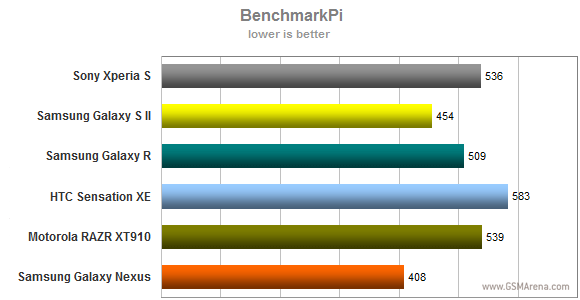
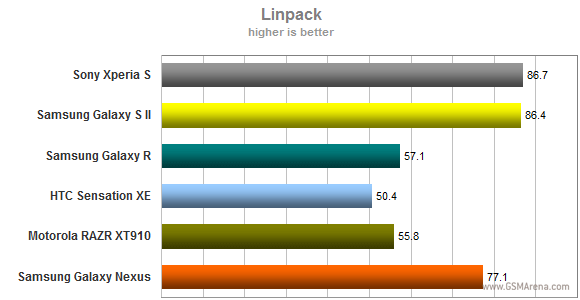
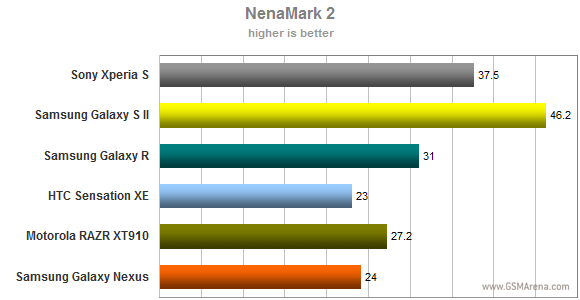
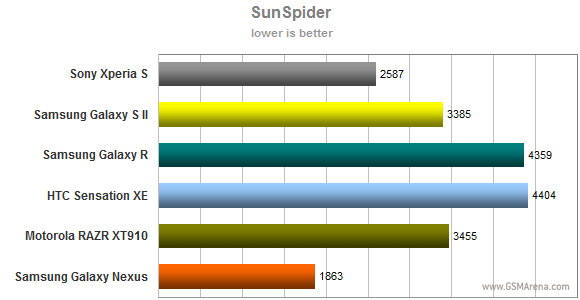
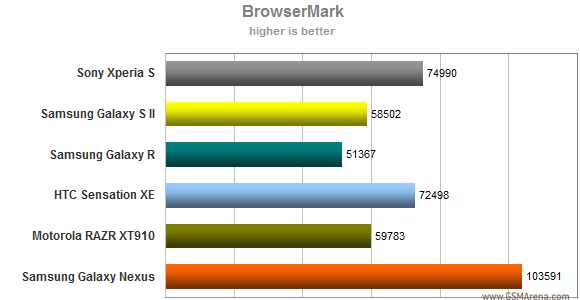
Battery life



Connectivity




Sony Xperia S has a microUSB and microHDMI ports



You need two MHL adapters to use the USB OTG and HDMI out functions on the Galaxy S IIConclusion
Dr Mobiles Limited
1 Huron Street, Takapuna, North Shore 0622
Tel: (09) 551-5344 and Mob: (021) 264-0000
Web - Map - Google+ - Email - Posterous - Twitter - Blogger - Flickr - Author


No comments:
Post a Comment